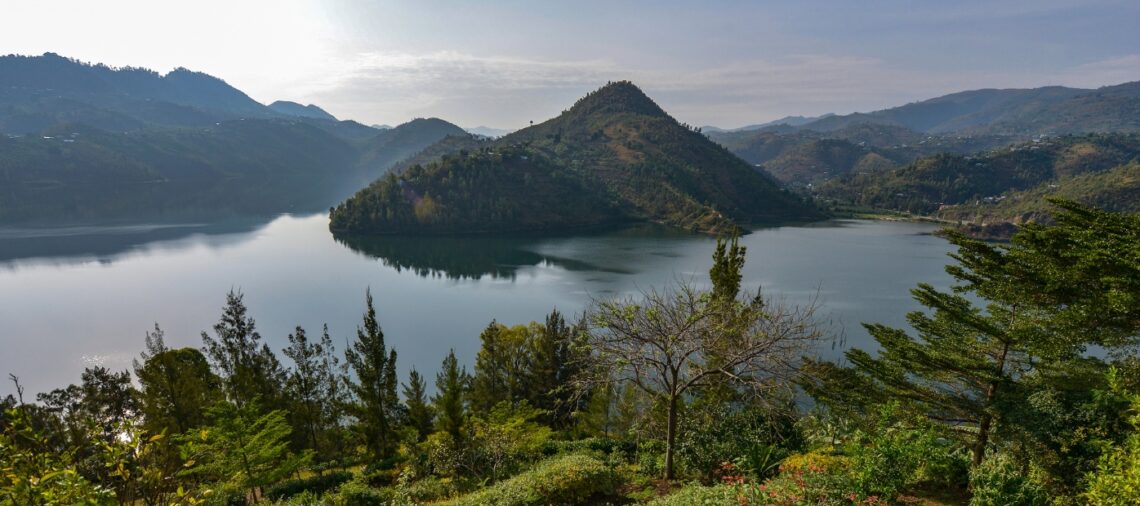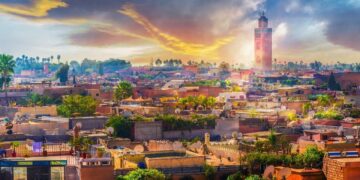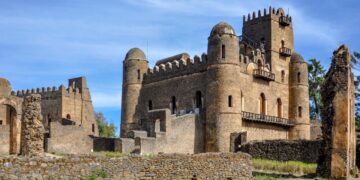Many people who have heard about this country, wonder where is Rwanda? Well, in the heart of East Africa lies Rwanda, a land of resplendent beauty and captivating stories. This enchanting destination has emerged from a complex history to reveal a treasure trove of the best tourist attractions in Rwanda. As travelers set foot on this land, they are greeted by a symphony of landscapes that evoke awe and wonder, inviting them to explore what to see in Rwanda.
Embark on a Journey of Discovery: What Awaits in Rwanda’s Embrace
Journeying into Rwanda unveils a world where nature and wildlife unite in breathtaking harmony. Among the best tourist attractions in Rwanda, the revered Volcanoes National Park stands as a sentinel, inviting adventurers to trek through its lush terrain in search of the elusive mountain gorillas. Meanwhile, Nyungwe Forest National Park whispers tales of ancient woodlands and houses a vibrant tapestry of primates, waiting to be discovered.
Akagera National Park, a sprawling savannah, offers an entirely different spectacle – an encounter with the African Big Five against a backdrop of boundless horizons. And when we talk about this country, we can’t not refer to one of the most magnetic activities you can do here: visiting the gorillas of Rwanda.
Where Culture Meets Conservation
Rwanda is not just a realm of natural marvels; it’s also a canvas upon which the indomitable spirit of its people is painted. The bustling streets of Kigali pulsate with modern energy, offering a glimpse into Rwanda’s evolving identity. Yet, amidst this urban dynamism, poignant echoes of the past resonate through somber memorials, honoring the nation’s journey of healing.
The cultural mosaic of Rwanda stands as a testament to the symbiosis of nature and humanity, creating an unforgettable experience that lingers in the hearts of those who journey through this mesmerizing landscape, uncovering the best tourist attractions in Rwanda along the way. Because Rwanda tourism has taken a front seat.
Of course there are some questions regarding a Rwanda trip, a visit in Rwanda or spending a vacation in Rwanda. One of the most important is: is Rwanda safe to visit? Other: which is the best time to visit Rwanda? We will answer these questions at the end of the article.
Going to Rwanda? Here you have the best plane tickets to Kigali
Here you have the best hotels in Kigali, Rwanda
Best tourist attractions in Rwanda
Volcanoes National Park: An Encounter with Majestic Giants
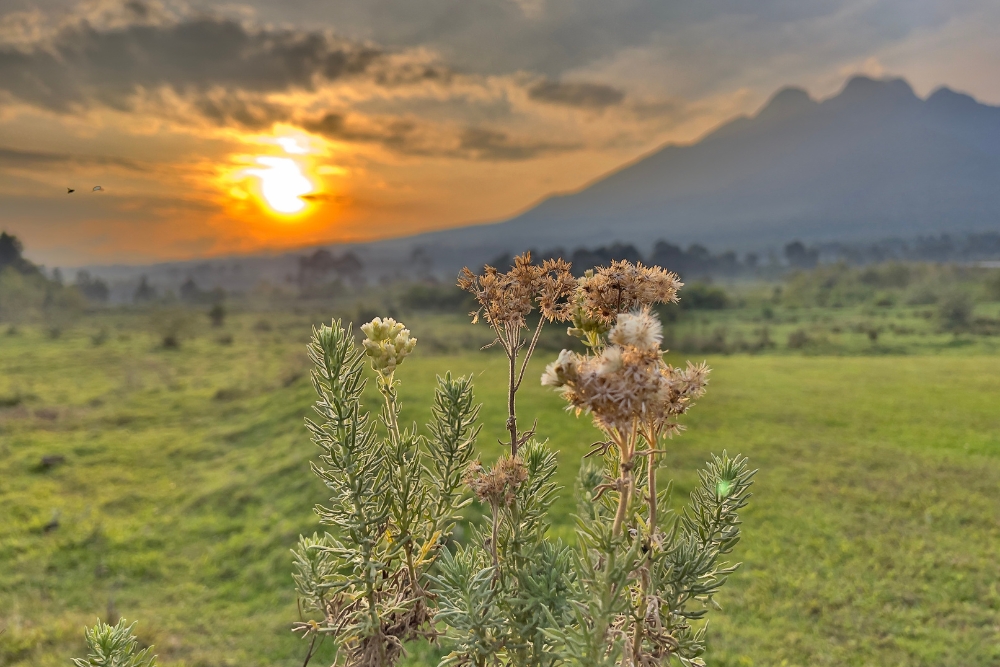
Nestled in the scenic heart of Rwanda, Volcanoes National Park stands as a testament to the country’s commitment to wildlife conservation and ecotourism. Established in 1925, it is one of the oldest national parks in Africa. What is unique about Volcanoes National Park in Rwanda? Encompassing a sprawling area of approximately 160 square kilometers, the park is renowned for its captivating landscape and its role as a haven for the critically endangered mountain gorillas. The park forms part of the Virunga Massif, a chain of eight ancient volcanoes that stretch across the borders of Rwanda, Uganda, and the Democratic Republic of Congo.
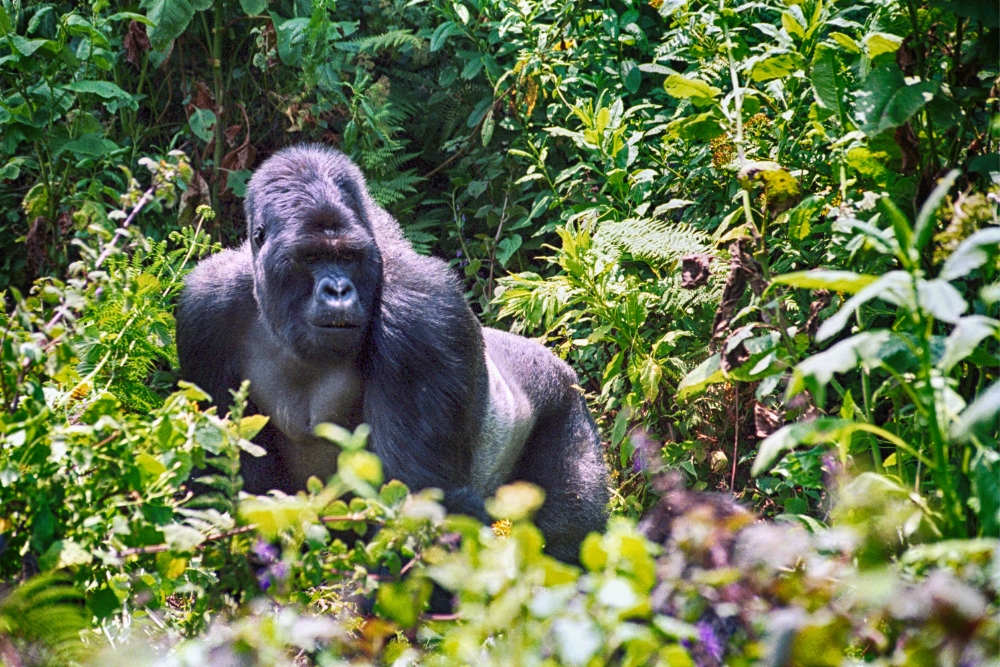
Volcanoes National Park offers a profound and immersive experience for nature enthusiasts and wildlife aficionados alike. The park’s main highlight is undoubtedly the opportunity to engage in gorilla trekking, a once-in-a-lifetime experience that allows visitors to observe these gentle giants in their natural habitat. With a meticulously managed system, only a limited number of permits are issued each day, ensuring a minimal impact on the gorillas’ environment and behavior.
Accompanied by experienced guides and trackers, visitors embark on a guided hike through the dense bamboo forests and verdant slopes of the volcanoes, eventually coming face-to-face with a habituated gorilla family. This intimate encounter fosters a deep appreciation for the importance of conservation efforts while granting a rare glimpse into the lives of these captivating creatures.
Beyond gorilla trekking, Volcanoes National Park presents a wealth of biodiversity, including golden monkeys, various bird species, and diverse flora adapted to the varying altitudes. The park’s volcanic terrain provides a captivating backdrop for hiking adventures, with trails catering to different fitness levels and interests.
The Dian Fossey Tomb, a memorial dedicated to the legendary primatologist, offers insight into her pioneering work with mountain gorillas. Visitors to Volcanoes National Park not only partake in an unforgettable expedition but also contribute directly to the ongoing preservation of this remarkable ecosystem, ensuring its viability for generations to come.
Nyungwe Forest National Park: Where Canopy Adventures Await
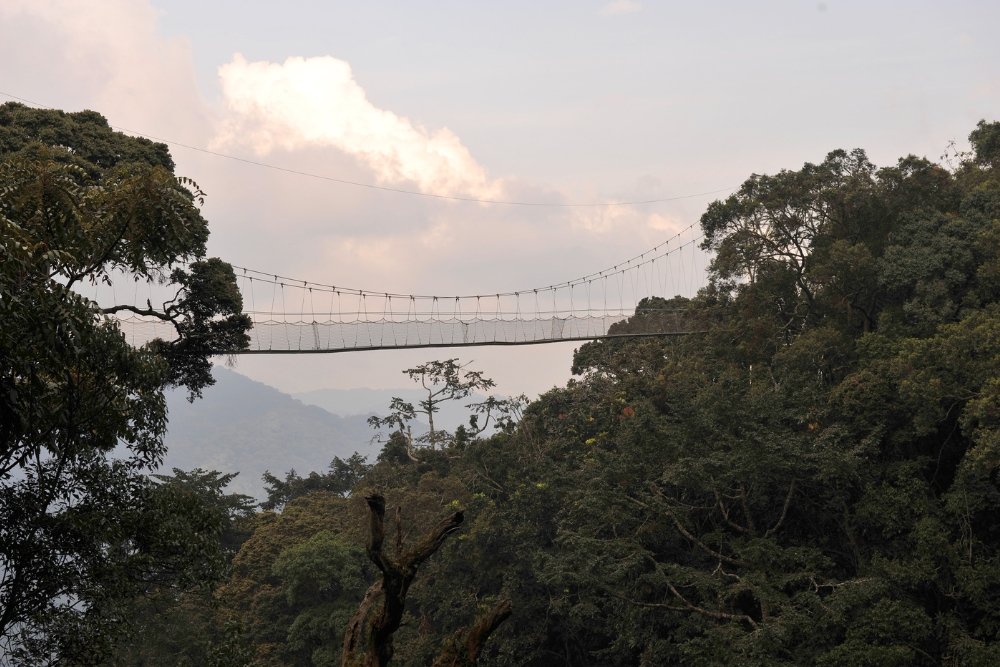
Nestled in the southwestern corner of Rwanda (near the border with Burundi, south of Lake Kivu and west of the Democratic Republic of the Congo), Nyungwe Forest National Park is a biodiverse haven that beckons to nature enthusiasts and adventure seekers alike and is one of the biggest national parks that have boosted the Rwanda tourism industry. Also. Nyungwe Forest National Park is one of the main tourist attractions in Rwanda.
Spanning an expansive area of approximately 1,019 square kilometers, this ancient montane rainforest is a living testament to Rwanda’s commitment to conservation. Established in 2004, the park’s pristine ecosystem boasts an impressive array of flora and fauna, making it a must-visit destination for those seeking a unique and immersive encounter with nature.
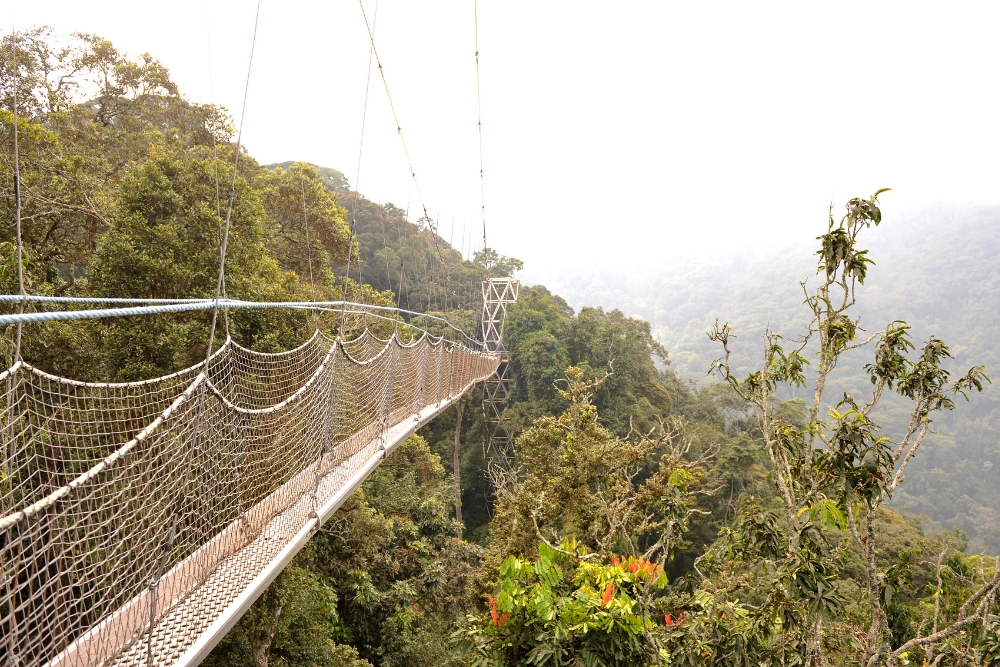
Nyungwe Forest is renowned for its rich biodiversity, housing over 1,000 plant species, including numerous endemic and rare varieties. The park’s verdant canopy shelters an incredible diversity of wildlife, including 13 species of primates, making it a hotspot for primate enthusiasts. Among its most famous inhabitants are the chimpanzees, which can be tracked through the forest under the guidance of experienced trackers.
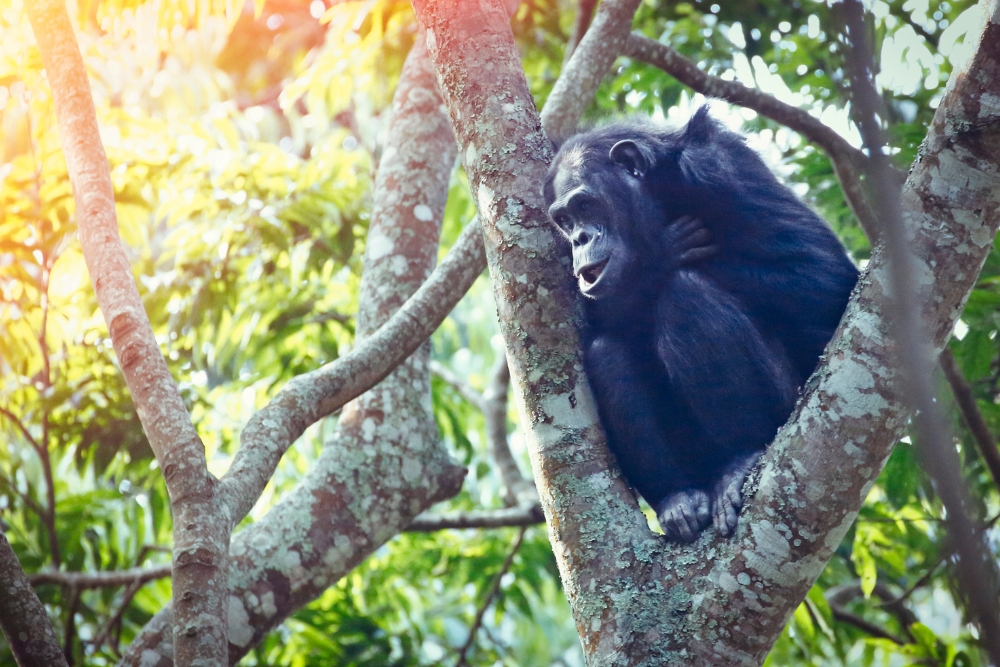
That is why, Nyungwe Forest National Park is a Rwanda chimpanzee safari destination. Within the National Park, there are just two chimpanzee groups that have been habituated. The first, a smaller group consisting of approximately 30 chimpanzees, is monitored within the Cyamudongo Forest region of the park. The second, larger group comprises around 60 habituated chimpanzees. The park also offers captivating hiking trails that wind through lush landscapes, showcasing waterfalls, swamps, and panoramic vistas.
The Canopy Walkway, a suspension bridge that soars above the treetops, offers a thrilling opportunity to observe the forest’s inhabitants from a unique vantage point. Nyungwe’s allure lies not only in its natural beauty but also in its role as a vital watershed for Rwanda, emphasizing the park’s ecological significance and the country’s dedication to preserving its natural treasures.
Akagera National Park: Where the Wild Roam Free
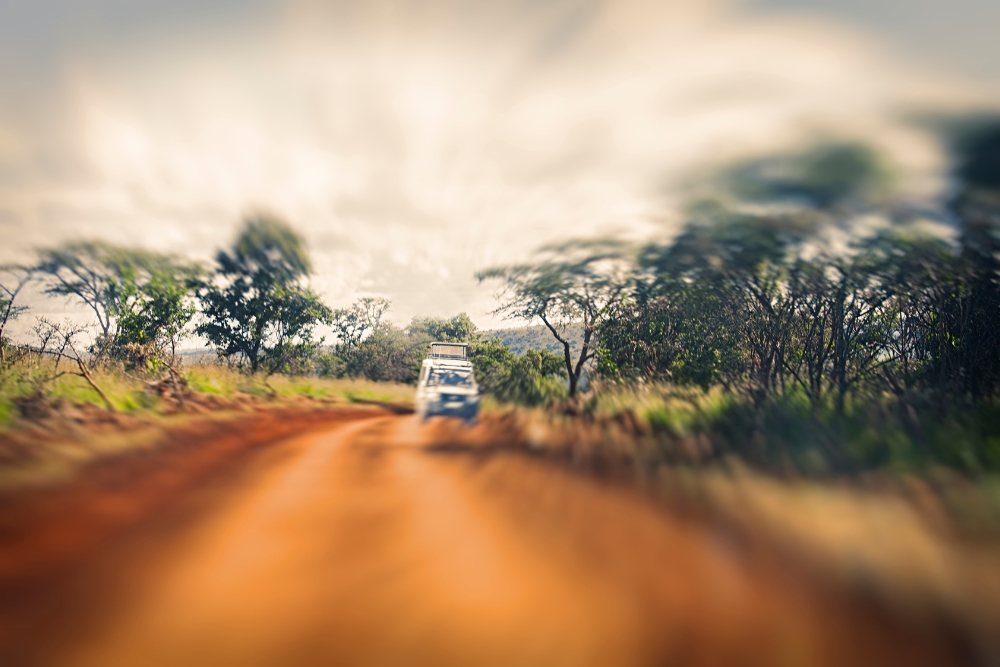
Nestled in the northeastern part of Rwanda, Akagera National Park, which is one of the most beautiful places to visit in Rwanda, stands as a testament to the country’s commitment to biodiversity conservation and ecological rejuvenation. Originally established in 1934, the park has undergone a remarkable transformation in recent years, evolving into a thriving ecosystem that showcases the diverse landscapes and wildlife of the region.
Originally spanning over 2,500 square kilometers, the park underwent a significant reduction in 1997, shrinking by nearly half of its original size. This adjustment was made to allocate land to returning refugees after the turbulent civil strife and genocide in Rwanda. Prior to 1997, this area had become home to numerous refugees, leading to detrimental effects on conservation efforts, including poaching and land cultivation.
Now, Akagera National Park is a mosaic of rolling savannah plains, lush wetlands, serene lakes, and undulating hills, creating a unique backdrop for a captivating safari experience. Its name derives from the Akagera River, which gracefully traces its eastern boundary.
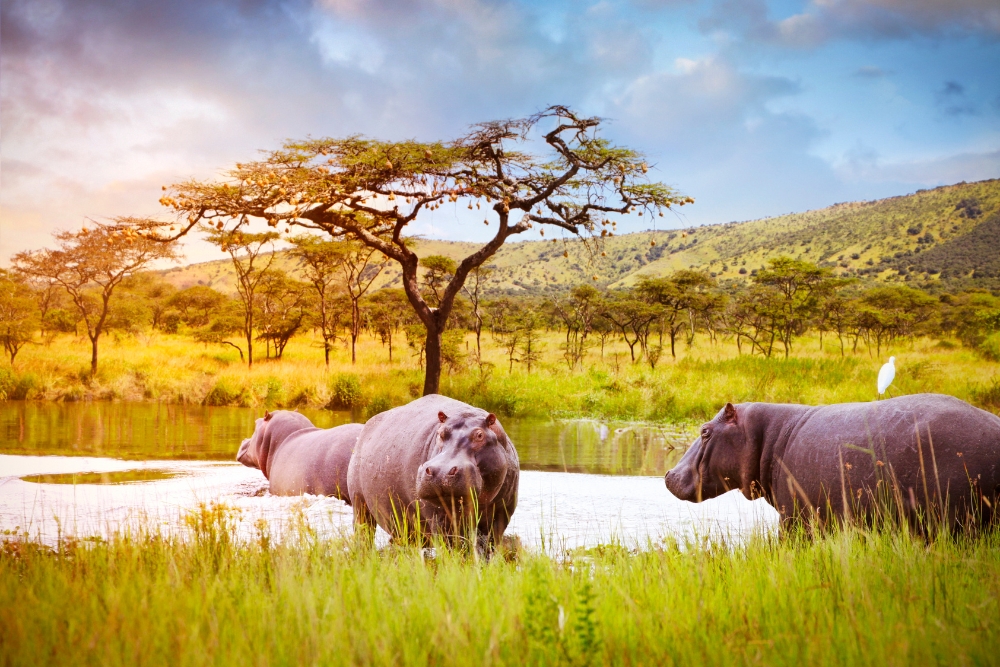
Akagera’s revitalization efforts have led to the reintroduction of several species that had been absent from the park for decades. One of the park’s main attractions is the presence of the “Big Five,” which includes lions, elephants, leopards, buffaloes, and rhinos. The reintroduction of black rhinos in 2017 marked a significant milestone in conservation, as these magnificent creatures had been absent from Rwanda for over a decade.
Guided game drives and boat safaris along Lake Ihema offer visitors the opportunity to witness these majestic animals in their natural habitat, accompanied by knowledgeable guides who provide insights into the park’s ecology and ongoing conservation initiatives.
The park’s diverse avian population is also a highlight, with over 500 bird species, making it a haven for birdwatchers. Akagera National Park not only provides an unparalleled wildlife experience but also underscores Rwanda’s dedication to preserving its natural heritage for future generations. If you are looking for Rwanda places to visit, put Akagera as a top place.
Lake Kivu: Serenity by the Shores
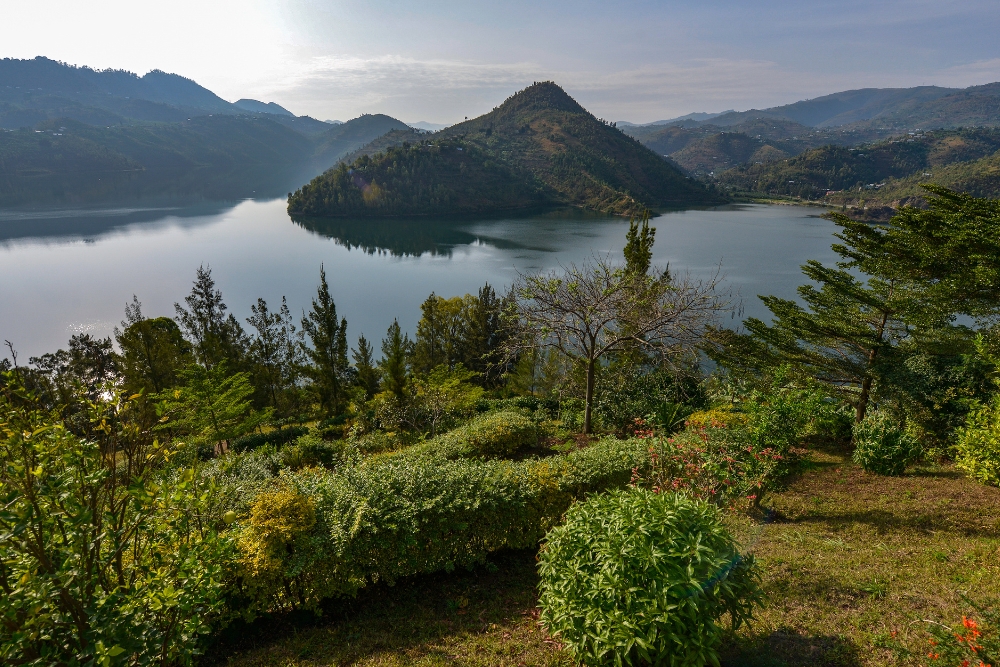
Nestled within the undulating landscapes of Africa’s Great Rift Valley lies the exquisite expanse of Lake Kivu, a glistening jewel framed by the towering embrace of magnificent mountains. This aqueous marvel, adorned with an emerald green cloak, stretches across a vast canvas of 2,700 square kilometers, asserting itself as not only Rwanda’s largest lake but also claiming the illustrious rank of the sixth largest across the entire African continent.
Venturing towards the northern fringes of Lake Kivu, we encounter the town of Rubavu, a realm that once bore the name Gisenyi. An effortless hour’s drive from the enigmatic Volcanoes National Park, Rubavu beckons as a sanctuary of repose subsequent to the awe-inspiring pursuit of gorilla trekking in Rwanda. The historical echoes of its colonial past reverberate through time, now manifesting in the form of venerable old mansions and hotels that grace the waterfront, where trendy bars extend an invitation to indulge in lakeside libations, perfectly encapsulating the charm of sundown.
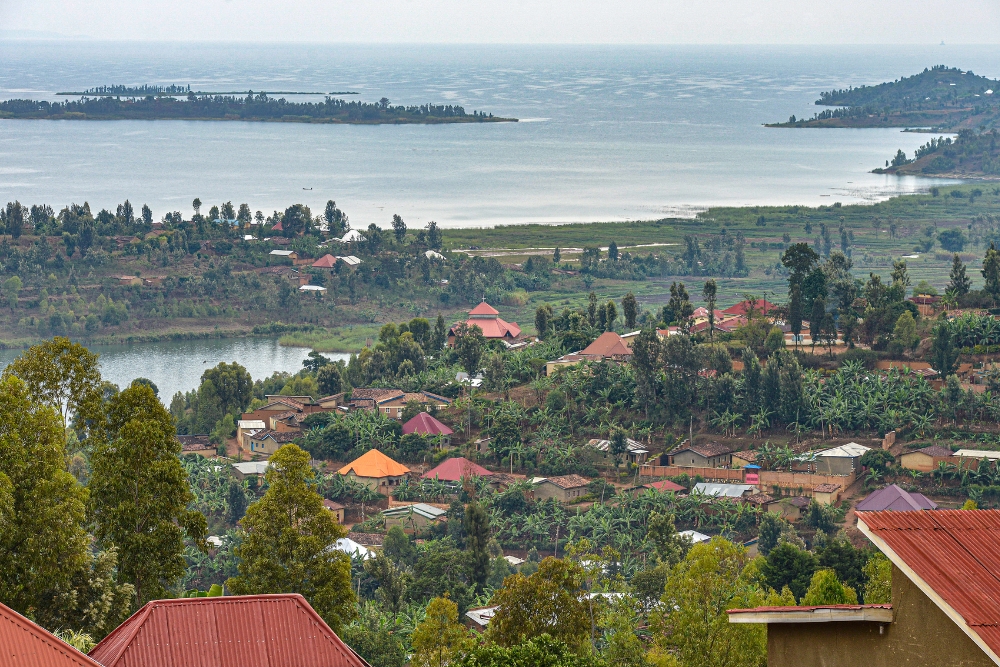
Journeying deeper along the lake’s perimeter, we unveil the picturesque panorama of Karongi, a captivating beach haven nestled equidistantly. Here, verdant hills adorned with a tapestry of pines and eucalyptus trees conspire to create a scenic backdrop that juxtaposes harmoniously against the sparkling aqueous expanse. Dawn and dusk unveil a symphony of melodious voices as local fishermen serenade the waters with their harmonious songs, a timeless echo of their synchronous paddling.
Embarking from the northern enclave of Rubavu, the illustrious Congo Nile Trail unfurls its sinuous embrace, a 227-kilometer odyssey that traverses an arresting tableau of landscapes, culminating at the southern oasis of Rusizi, a confluence that caresses Lake Kivu’s shores. This serpentine trail, an orchestration of curves that mirror the undulations of the hills and mountains, meanders in a graceful dance alongside the lake’s mirrored surface. Eucalyptus sentinels line this meandering path, akin to nature’s honor guard, while the very hills seem to be meticulously etched in a mosaic of banana-terraced perfection.
For the intrepid voyagers who seek to inscribe their tales in the annals of adventure, an exhilarating sojourn manifests in the form of kayaking escapades upon the aqueous tapestry of Lake Kivu. Alternatively, the undulating topography invites the pursuit of mountain biking, or perhaps the communion with nature attained through the art of hiking. Embarking upon the lesser-trodden stages of the Congo Nile Trail, an itinerary brimming with six stages of discovery, one has the privilege of unearthing Rwanda’s mystique in a manner that mirrors the profound ebb and flow of its captivating landscapes.
Kigali: A City of Resilience and Renewal
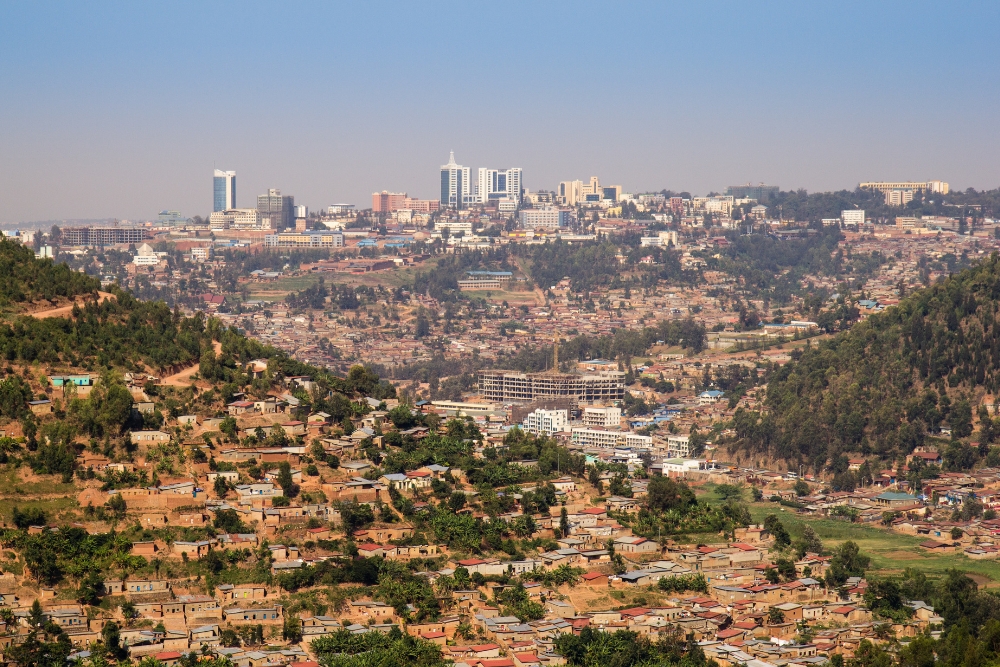
In the heart of Rwanda, precisely nestled amidst various hills and valleys, lies Kigali, Rwanda’s capital city. Its roads effortlessly connect to the entire nation, showcasing its intricate design. This verdant metropolis, while subdued, emanates an aura of dynamism and progression, home to a slightly exceeding one million denizens.
Novice explorers venturing into the lively and vibrant epicenter invariably comment on the impeccable tidiness of its thoroughfares—a sentiment that resonates proudly across every community within the land’s expanse.
Kigali, a relatively nascent urban creation, sprang into existence in 1907 as an administrative bastion, ultimately ascending to the status of the country’s capital in 1962, thereby redirecting attention from Huye.
The city’s extensive tree-fringed avenues and pristine plazas afford a secure promenade. Foreigners, generally left to their own devices unless seeking aid, are met with hospitable warmth if such a necessity arises.
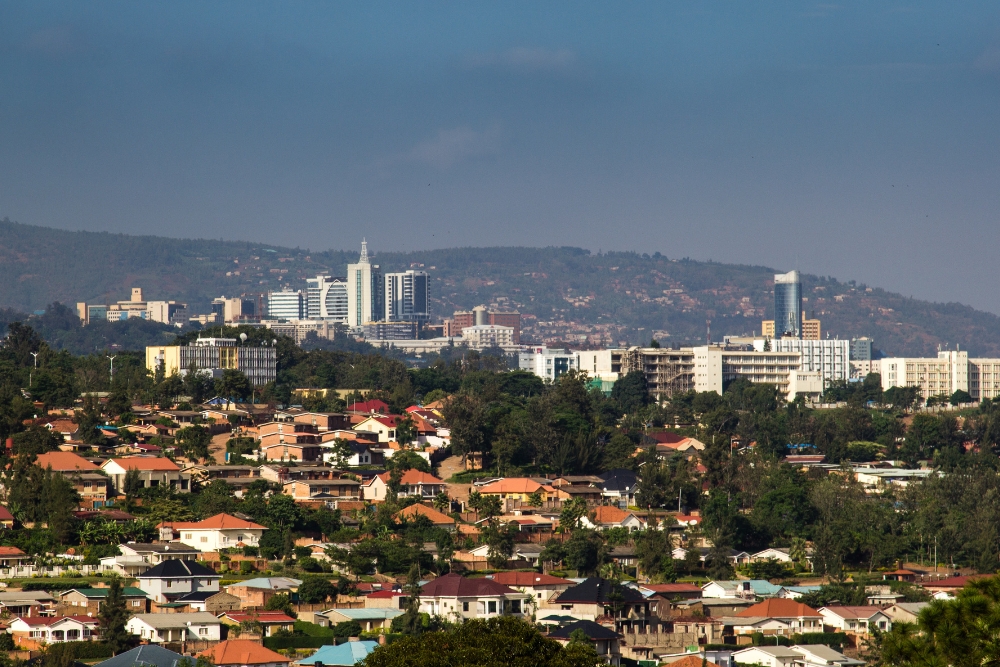
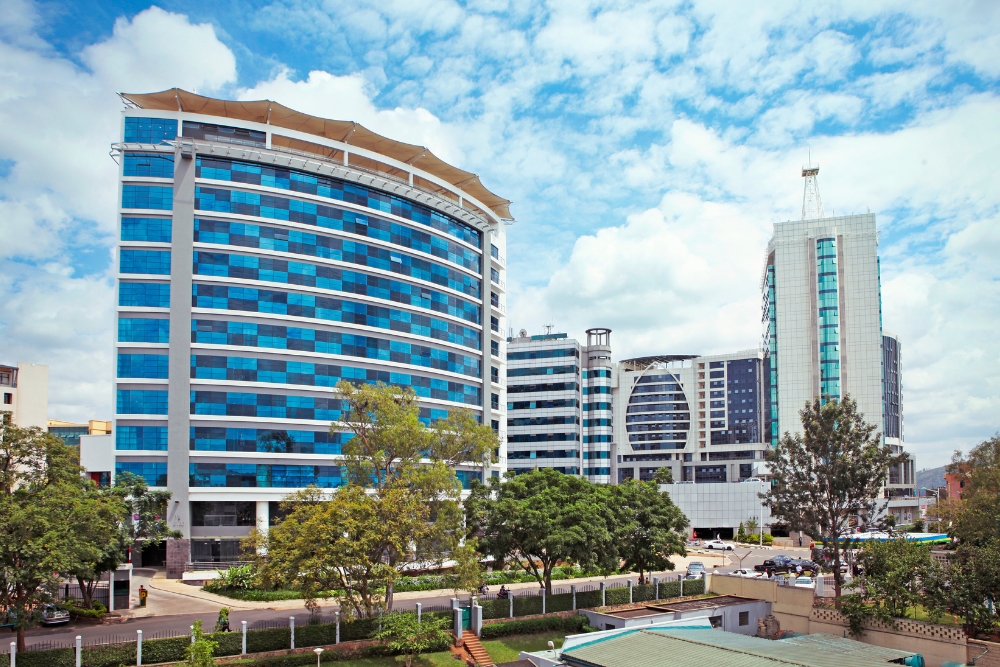
An emerging artistic sphere converges with an escalating array of opportunities for dining and partaking in libations, many venues boasting enchanting panoramic vistas. The Kigali Cultural Village stands as a dedicated domain for local craftsmen and culinary peddlers to showcase their wares and engage in trade.
Kigali unfurls its evolution at a breakneck pace, unveiling new emporiums, corporate edifices, and a world-renowned convention center that mirrors the architecture of ancient royal domains, illuminating the nocturnal heavens from one of the myriad peaks.
Nyarugenge Hill blankets the central business district, while further east, atop Kacyiru Hill, unfurls the governmental and administrative quarters.
Gracefully bordering one of the main valleys, Nyarutarama Lake, affectionately known as Lover’s Lake, neighbors an 18-hole golf course. The track encircling the lake exudes a remarkable tranquility, offering an excellent urban sojourn amidst nature. This jaunt also presents the opportunity to glimpse some of Rwanda’s extraordinary avian species.
A visit to Rwanda remains incomplete without paying respects at the Kigali Genocide Memorial—an institution that, through education and the cultivation of peace, commemorates the memory of the over one million Rwandans tragically lost in 1994. The three enduring exhibitions and the gardens of interment constitute a profound homage to those who perished, serving as a potent pedagogical tool for its visitors.
The Ethnographic Museum
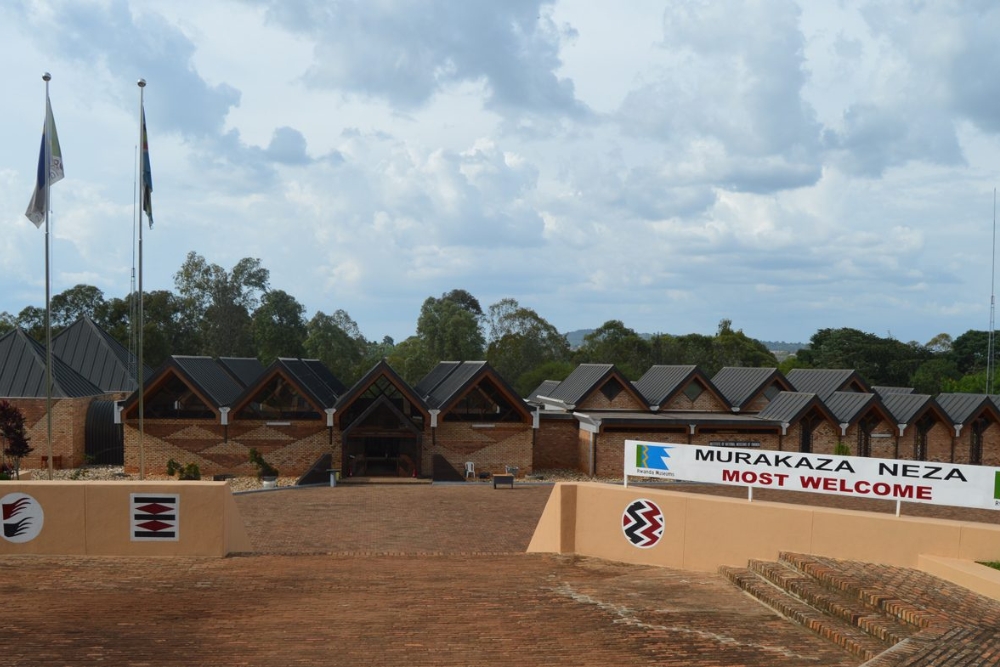
Amid the fabric of African landscapes, a trove of ethnological and archaeological wonders unveils itself within the confines of Rwanda’s Ethnographic Museum. Situated approximately 130 kilometers to the south of Kigali, nestled within the district of Huye, this repository stands as a testament to Rwanda’s historical intricacies. Bestowed by Belgium unto the city in the year 1989, this museum emerged as a tribute, commemorating the quarter-century milestone of Rwanda’s journey to sovereignty.The Ethnographic Museum is one of the most valuable tourist attractions of Rwanda, a must on every traveller’s agenda.
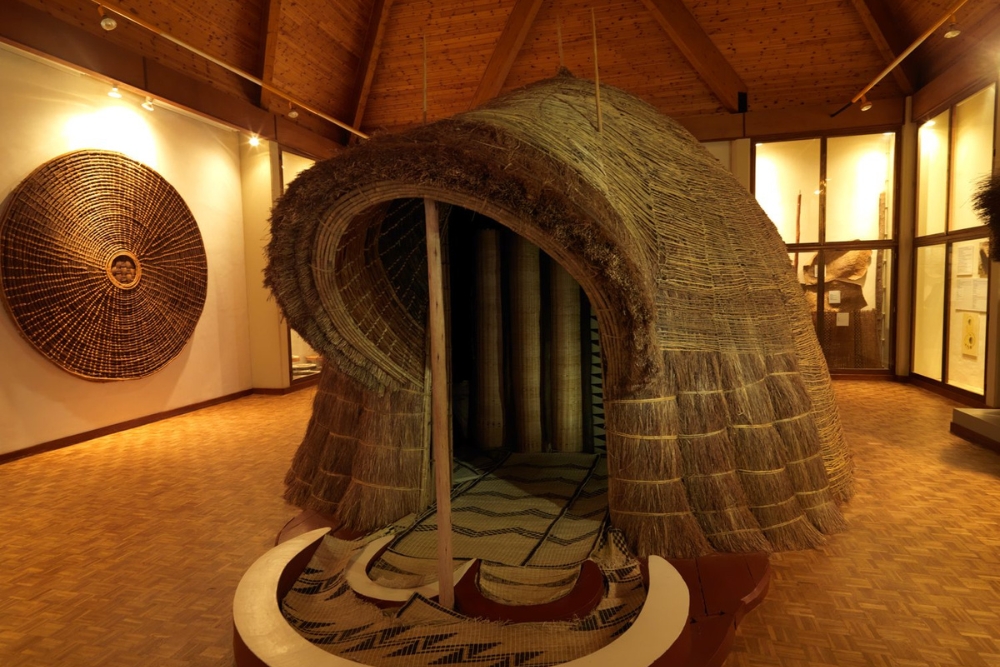
Embarking upon the corridors of the Ethnographic Museum, voyagers find themselves seamlessly transported through the annals of time, back to the era preceding colonial dominance in Rwanda. An assemblage of remarkable caliber graces the seven galleries, each vignette an ode to the craftsmanship and culture of yesteryears. Woven baskets, meticulously crafted using the fibers of nature, stand beside traditional attire fashioned from animal hides and intricately woven vegetation. Ancient armaments, encompassing spears and bows, rest in contemplative stillness, whispering stories of bygone valor. Echoes of antiquity resonate from the musical drums, their rhythmic echoes spanning centuries, while the tools of agriculture from eras past bear testament to human toil etched into the soil.
Within the confines of this museum, one can traverse the threshold of a genuine royal abode, an architectural opus infused with ancestral wisdom. Aspiring scholars of history stand to gain profound insights into the meticulous construction methods employed in regal dwellings of old. Moreover, the museum serves as a stage for the living artistry of handicraft, where adept artisans orchestrate demonstrations that breathe life into dormant practices.
Buhanga Eco Park
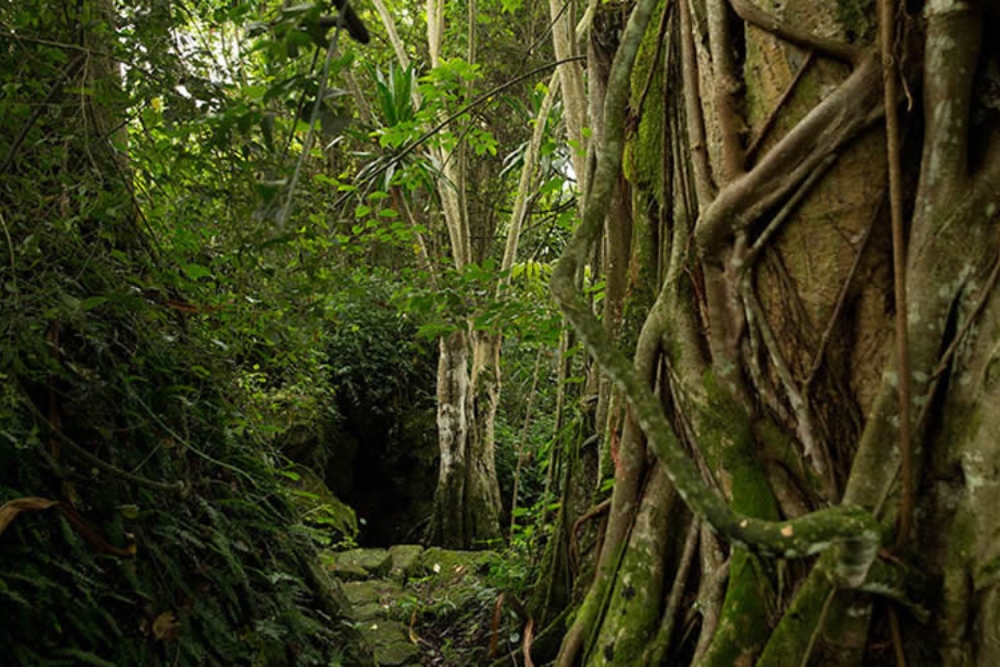
Located just a short drive from the renowned Volcanoes National Park lies a hidden gem with immense ecological and cultural significance. Buhanga Eco Park, a haven of wonders, beckons you to explore its rich tapestry of history and natural beauty. Unveiling ancient sacred sites that once hosted the coronation rituals of Rwandan Kings, this park stands as a testament to the splendid past and vibrant present of the region.
Within the heart of Buhanga Eco Park lies a treasury of unique attractions, each carrying echoes of Rwanda’s regal heritage. Delve into the story of the kings as you encounter intriguing landmarks that have witnessed the grandeur of their coronations.
Venture into the embrace of the Small Ditch, a serene enclave enveloped by lava stones and lush thickets. This sacred spot once served as a source of herbs for the king’s ceremonial shower during his coronation. The diligent hands of the king’s helpers, known as Abiru, carefully gathered these herbs, infusing the ritual with a touch of nature’s purity.
Step into the realm of the Dark Cave, a mystical cavern framed by massive boulders. It was within this hallowed space that the king was conveyed in a traditional Royal Carriage, traversing the path from his palace to the cave without interruption. Here, amid the embrace of the cave’s enigma, he would partake in a bath infused with a concoction of herbs and spring water, a ritual that marked his transition to kingship.
A testament to architectural finesse, the Conference Podium awaits, sculpted from meticulously hewn lava rocks. Positioned on the precipice, this podium cradled the king post-bathing. It was here that he received the symbols of kingship, blessings, and divine protection, solidifying his authority as a ruler chosen by the gods themselves.
Buhanga Eco Park extends a warm embrace to nature enthusiasts and history buffs alike. As you traverse its trails, a symphony of sights and sounds unfurls before you, creating an immersive experience like no other.
Wander along pathways adorned with intricately cut lava stones, a testament to human artistry in harmony with nature’s rugged beauty. These paths echo with the footsteps of kings and history, inviting you to join their age-old dance through time.
Gaze upwards to behold a majestic canopy of towering trees that seem to touch the sky. Each tree stands as a witness to the passage of centuries, offering shade, shelter, and a glimpse into the past as their leaves rustle tales of ancient days.
The park’s diverse ecosystem unveils a vibrant tapestry of plant life. From the delicate elegance of colorful butterflies to the sweet serenades of various bird species, every corner of Buhanga Eco Park teems with life, painting a vivid portrait of biodiversity.
As you explore, the park reveals intriguing legends that have woven themselves into its very fabric, adding a layer of mystique to your journey.
Discover the Small Spring, its waters shrouded in darkness, harboring the legacy of the past. This is the very spring where the king’s bathwater once collected, a tangible link to the ancient ceremonies that unfolded within these hallowed grounds.
Engage with the myths surrounding the Three in One Tree and the Curse Tree. These storied sentinels of nature have tales to tell, each branch and leaf echoing with narratives that intertwine with the kings’ reign and the folklore of the land.
The Twin Lakes
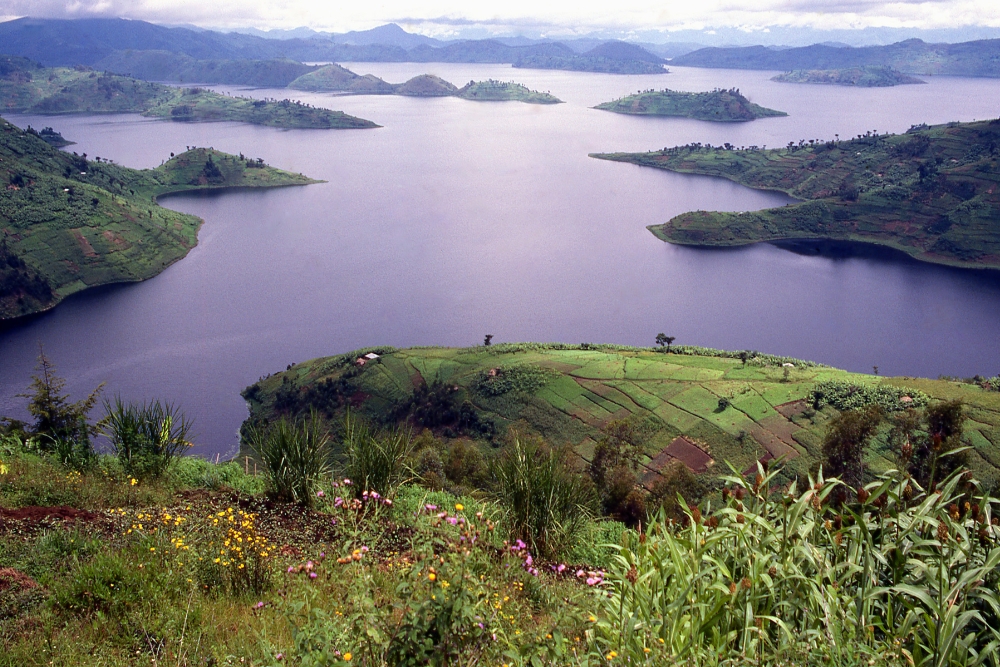
In the picturesque Musanze district in Rwanda, Lake Burera and Lake Ruhondo stand as the stunning Twin Lakes, converting in two of the most beautiful tourist attractions in Rwanda. These remarkable bodies of water lie at the foothills of Mount Muhabura, offering a captivating experience for nature enthusiasts and explorers. The lakes, with a combined surface area of 2800 hectares, were shaped by the forces of a volcanic eruption. This volcanic activity led to the creation of the Twin Lakes when the glaciers from Mount Muhabura blocked the path of the Nyabarongo River, redirecting its flow away from Northern Rwanda.
Embraced by the nature, Lake Burera and Lake Ruhondo provide an enchanting spectacle that draws tourists from across the globe. The sprawling landscape surrounding the lakes offers a unique blend of wetland habitats and vibrant water bird populations. As you gaze upon the horizon, the majestic Virunga Volcanoes form an awe-inspiring backdrop, creating an atmosphere of tranquility and grandeur.
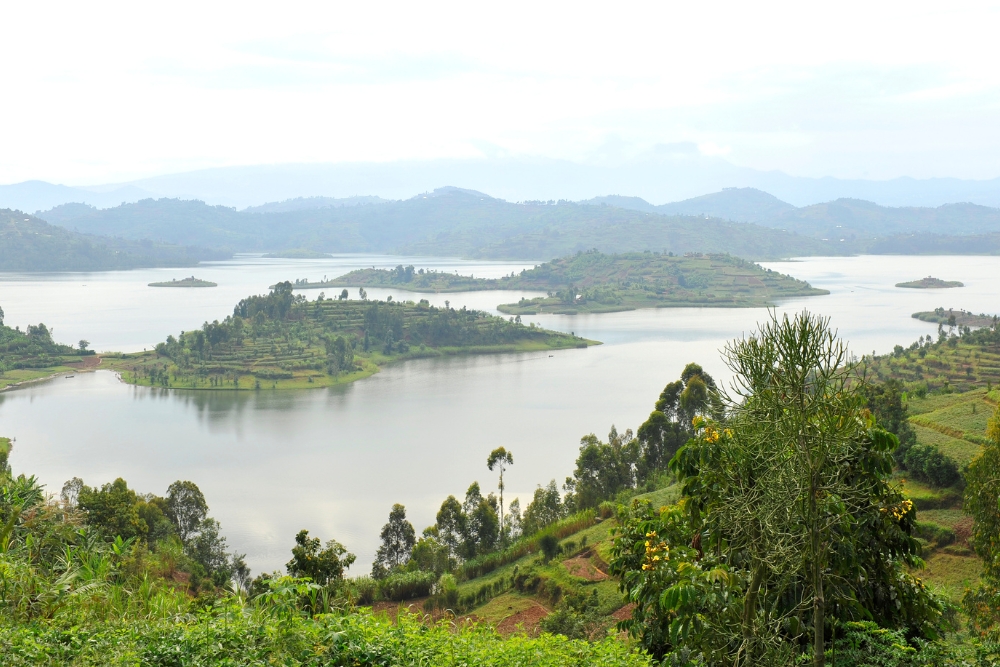
These Twin Lakes are not only a feast for the eyes but also a playground for adventure seekers. The lakeside communities exude the rich culture and hospitality of Rwanda, offering visitors a chance to immerse themselves in local traditions. Furthermore, the proximity to neighboring Uganda and the Democratic Republic of Congo opens doors to explore an array of magnificent attractions in the region.
To truly appreciate the beauty of Lake Burera and Lake Ruhondo, consider embarking on a serene boat ride or a thrilling canoe adventure. The crystal-clear waters of the Twin Lakes invite you to indulge in a leisurely boat ride, where the gentle ripples and soothing ambiance provide a sense of calm. As you paddle along the lakeshores in a canoe, you’ll be rewarded with refreshing bursts of air and breathtaking views of the lush green vegetation.
One of the most remarkable aspects of these lakes is the absence of dangerous water animals like crocodiles. The pristine waters of Lake Burera and Lake Ruhondo are free from such threats, allowing you to explore with a sense of security and assurance. This unhindered environment enables you to fully immerse yourself in the natural beauty that surrounds you.
Iby’iwacu Cultural Village: Connect with Local Traditions
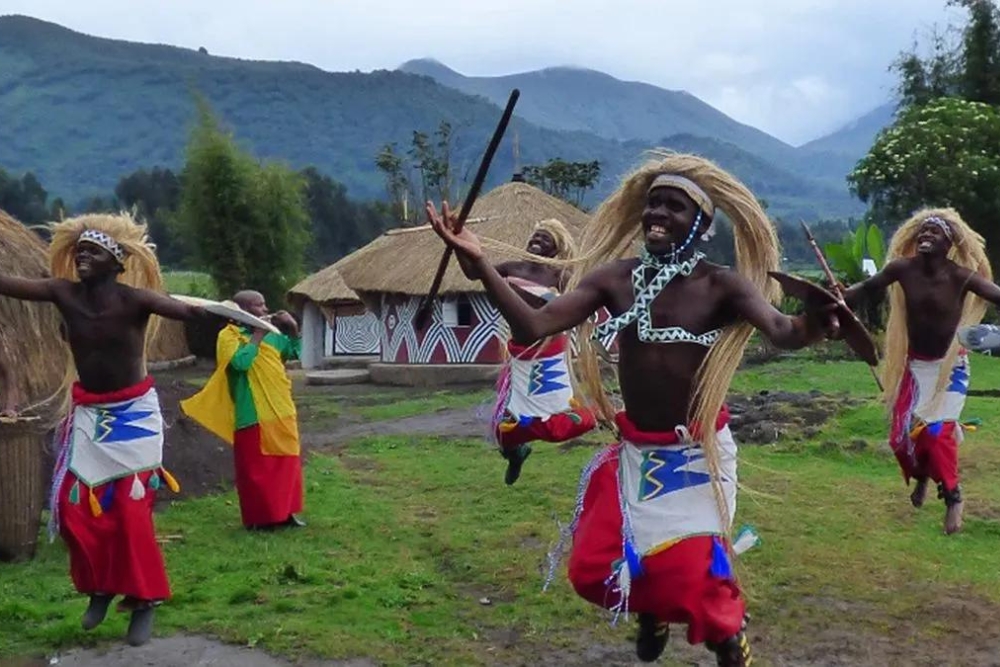
The inclusion of a cultural tour to Ibyiwacu Cultural Village in Rwanda serves as a significant highlight that enhances the exceptional nature of Rwanda safaris. The Iby’Iwacu Cultural Village offers a unique and valuable opportunity to engage with the local population within their natural setting, providing a comprehensive immersion into the indigenous culture and traditions.
Visitors are cordially received by the community as esteemed guests, and in this capacity, they are presented with various facets of the community’s heritage, practices, and belief systems. It is emphasized that a profound understanding of a community can only be achieved through close proximity, interactive engagement with the local inhabitants, and active participation in their day-to-day activities.
Situated in the vicinity of the Parc National des Volcans in Nyabigoma, Kinigi, Musanze district, Northern Province, the Iby’Iwacu village beckons travelers to partake in an enriching experience alongside the local populace, thereby gaining insights into their domestic and cultural legacies.
This encompasses their customary routines, occupations, cultural artifacts, and general ways of existence. Notably, the prime objective of the Iby’Iwacu Cultural Village centers on the presentation of authentic portrayals of traditional ways of life, in addition to showcasing indigenous dance forms, all of which collectively contribute to the edification of the visiting tourists.
King’s Palace Museum: A Glimpse into Royalty
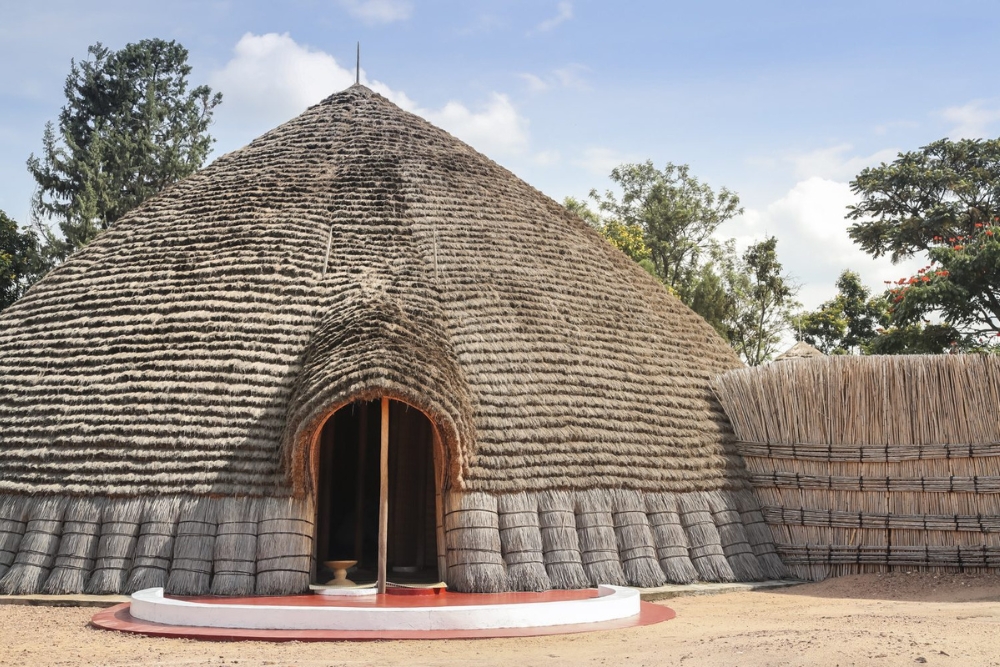
In the heart of Rwanda’s cultural heritage, the King’s Palace Museum, also known as the “Rukari Palace,” stands as a testament to the country’s rich history and regal traditions. Located in Nyanza, the former royal capital of Rwanda, this museum offers a captivating glimpse into the monarchy’s legacy. The palace complex includes the reconstructed residence of King Mutara III Rudahigwa, built using traditional materials and techniques, providing visitors with an authentic insight into the royal lifestyle.
The King’s Palace Museum not only showcases the opulent living quarters of the Rwandan monarch but also features a fascinating collection of artifacts and exhibits that delve into the cultural tapestry of the country.
The Inyambo cattle, a symbol of Rwanda’s heritage, can be observed in their graceful dances, reflecting the intricate bond between humans and animals. Visitors can explore the palace’s intricately designed interior, adorned with historical relics and royal regalia, gaining a deeper understanding of Rwanda’s dynastic past.
The museum also houses a craft center, where skilled artisans demonstrate traditional crafts such as pottery, weaving, and woodcarving, allowing guests to engage with the living traditions that continue to shape Rwandan culture.
The King’s Palace Museum serves as a cultural repository, preserving and sharing Rwanda’s royal history with a modern audience, making it an essential stop for travelers seeking to unravel the layers of Rwanda’s captivating heritage.
Questions regarding a visit in Rwanda
Is Rwanda safe to visit?
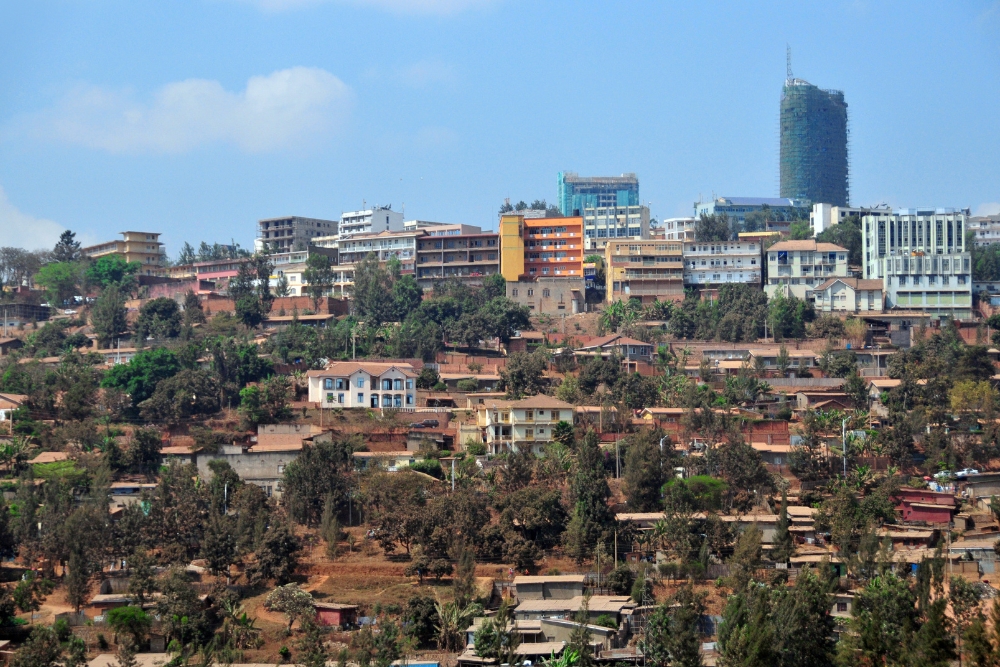
Rwanda is generally considered a safe destination for travelers. However, safety conditions can change over time, so it’s crucial to check for the most up-to-date information before planning any trip. Here are some points to consider when assessing Rwanda’s safety for travel:
Low Crime Rate: Rwanda has a relatively low crime rate compared to many other countries in the region. Violent crime against tourists is rare, and the country is known for its stability and security.
Political Stability: Rwanda has made significant progress in terms of political stability and security since the tragic events of the 1994 genocide. The government has taken measures to ensure safety and promote reconciliation.
Health Precautions: Rwanda has taken proactive measures to control the spread of diseases like COVID-19. Be sure to check the latest health guidelines and entry requirements, including any vaccination or testing requirements.
Wildlife Safaris: Rwanda is famous for its gorilla trekking opportunities, particularly in Volcanoes National Park. While the parks themselves are well-protected, it’s essential to follow the guidelines of park authorities to ensure your safety during wildlife encounters.
Travel Advisories: It’s advisable to check your government’s travel advisory for Rwanda before planning your trip. Governments typically provide updated information regarding safety and security concerns for their citizens traveling abroad.
Local Customs and Culture: Respecting local customs and traditions is important in Rwanda. Understanding and adhering to the local culture can contribute to a more positive and safe travel experience.
Transportation: Rwanda’s road infrastructure has improved significantly, but road conditions can still vary, particularly in rural areas. Be cautious when driving and consider hiring a local driver if you are not familiar with the terrain.
Personal Safety: As in any destination, exercise common sense and take precautions like safeguarding your belongings, avoiding poorly lit or isolated areas at night, and being aware of your surroundings.
Travel Insurance: Consider purchasing travel insurance that covers medical emergencies, trip cancellations, and other unexpected events to ensure you are adequately protected during your trip.
How is weather in Rwanda? Which is the best time to visit Rwanda?
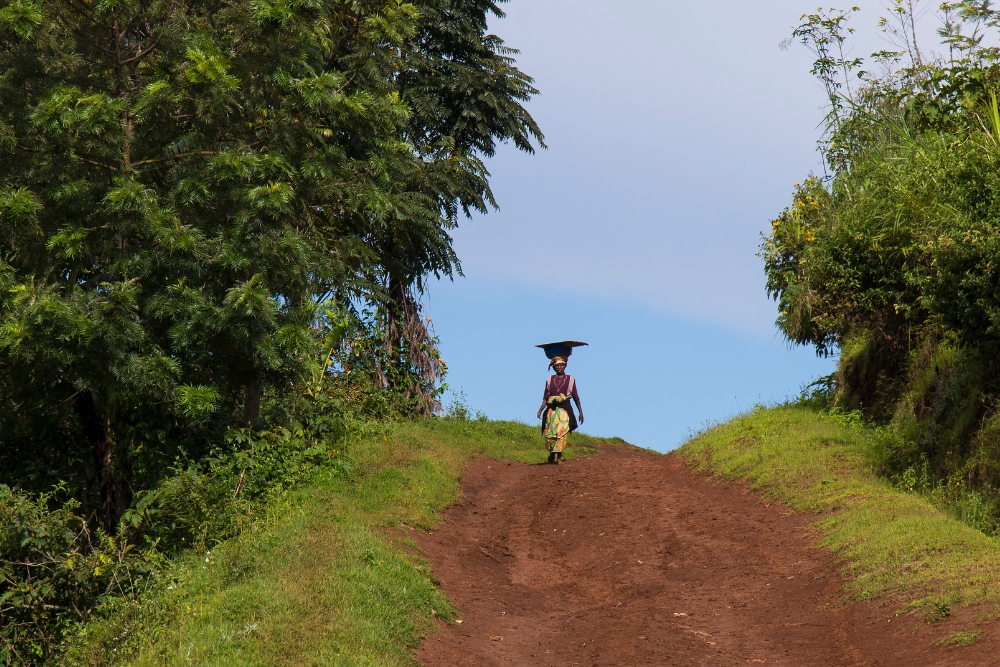
Rwanda’s climate is largely influenced by its elevation and equatorial location. The country is often referred to as the “Land of a Thousand Hills” due to its hilly terrain. Overall, Rwanda has a temperate tropical highland climate, which means it experiences relatively mild temperatures throughout the year. However, there are some variations in weather depending on the region and the time of year.
Dry Season (June to September): This is generally considered the best time to visit Rwanda. During these months, the weather is relatively dry, and you can expect pleasant temperatures with daytime highs ranging from 20°C to 27°C (68°F to 81°F) in the capital, Kigali. The dry season is ideal for activities like gorilla trekking, wildlife safaris, and exploring the country’s beautiful landscapes.
Short Rainy Season (October to November): This period marks the start of the short rains. While it can still be a good time to visit, you should expect occasional rain showers. Temperatures remain mild, and the landscape is lush and green, making it a beautiful time for photography and scenery.
Long Rainy Season (March to May): This is the long rainy season in Rwanda, characterized by heavy rains. It can be less ideal for travel, as road conditions can become challenging due to mudslides and flooding in some areas. However, this season is perfect for birdwatching, as migratory birds are abundant.
December to February: This is another good time to visit Rwanda, as it falls within the short dry season. The weather is warm and mostly dry, making it an excellent time for outdoor activities and exploring the country.
When planning your trip to Rwanda, it’s essential to consider the specific activities you want to undertake. If you’re interested in gorilla trekking in Rwanda or other wildlife experiences, the dry seasons (June to September and December to February) are the best choices. However, if you prefer lush green landscapes and are willing to tolerate some rain, the short rainy season (October to November) can also be a rewarding time to visit.
Keep in mind that Rwanda’s weather can vary from region to region, so be sure to check the weather forecast for your specific destination within the country. Additionally, due to climate change, it’s a good idea to check for any recent weather patterns and updates before your trip to ensure you are well-prepared for the conditions during your visit.
Are the mountain gorilla trekking experiences in Volcanoes National Park safe?
Absolutely. The authorities take the safety of both visitors and gorillas seriously. Experienced guides lead the treks, and specific guidelines are in place to ensure a safe and respectful encounter with these incredible creatures.
Is it necessary to book gorilla trekking permits in advance?
Yes, due to the limited number of permits issued per day, it’s recommended to book your gorilla trekking permits well in advance to secure your spot.
Are there accommodation options near Akagera National Park?
Yes, Akagera offers a range of accommodation options, from lodges to tented camps, providing a comfortable stay in close proximity to the park’s wildlife-rich areas.
What should I wear during gorilla trekking?
Wear comfortable, moisture-wicking clothing in neutral colors. Sturdy hiking boots, a hat, sunscreen, and insect repellent are also essential.
How can I respect Rwanda’s cultural norms during my visit?
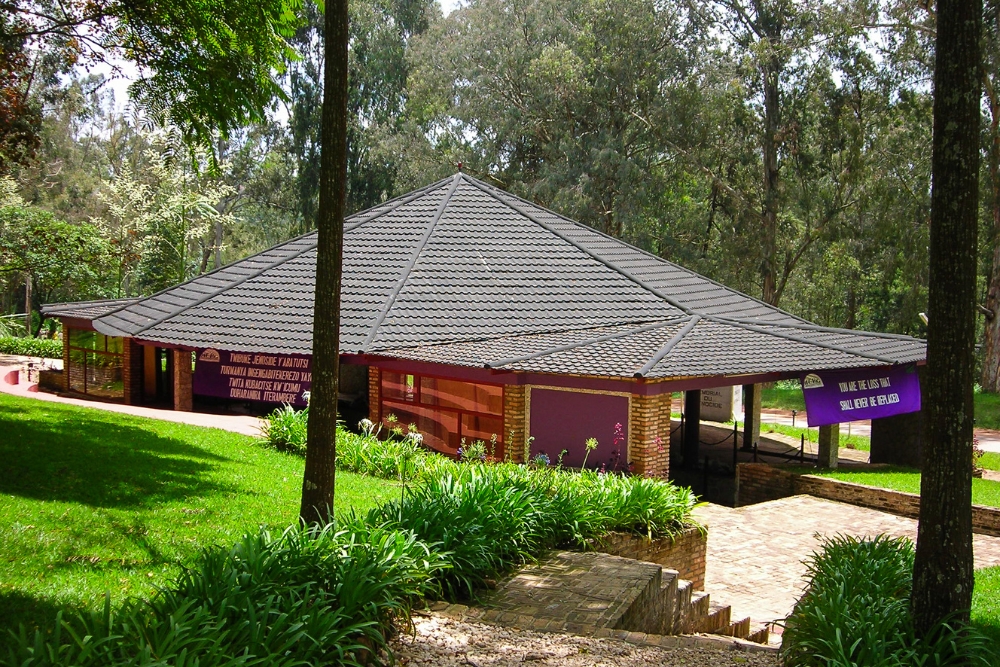
Respecting local customs is important. Dress modestly, ask for permission before taking photos of people, and engage with local communities with an open and respectful attitude.
What languages are spoken in Rwanda?
The official languages are Kinyarwanda, English, and French, with English widely spoken in tourist areas.
What vaccinations should I get for Rwanda?
When embarking on a journey to Rwanda, ensuring your health and safety is paramount. To make the most of your trip without any health concerns, it’s crucial to be well-prepared in terms of vaccinations. Below, we’ve provided comprehensive information on the vaccinations you should consider obtaining before your Rwandan adventure.
Updating Your Regular Vaccinations
Before setting foot in Rwanda, it’s essential to ensure that your routine vaccinations are up to date. This proactive step forms a fundamental layer of protection for any traveler. These vaccinations, which you likely received as a part of your standard healthcare, contribute to safeguarding your overall well-being.
Hepatitis A and Typhoid: A Necessity
Among the crucial vaccinations for your Rwanda travel, hepatitis A and typhoid shots stand out. These diseases can be contracted through contaminated food or water, posing a potential risk to travelers. To fortify your defenses against these ailments, considering these vaccinations is highly recommended.
Staying Hydrated and Safe
To minimize the likelihood of experiencing “traveler’s diarrhea,” a common ailment among tourists, it’s imperative to prioritize the quality of water you consume. Opt for commercially bottled water for drinking and ice cubes to reduce the chances of contamination. Additionally, exercise caution when it comes to food consumption – choose items that you can personally peel or that have been adequately cooked or boiled.
Guarding Against Meningococcal Meningitis
Rwanda presents an elevated risk of contracting meningococcal meningitis, particularly during the period from December to June. To ensure your safety, considering meningococcal meningitis shots is highly advisable. This disease spreads from person to person, similar to the flu or a cold. As a preventive measure, practicing excellent cough and sneeze etiquette is crucial. Regularly washing your hands and using your arm to cover your mouth and nose during coughing or sneezing can significantly mitigate the risk of transmission.
The emergency number in Rwanda is 112.
Photos: Canva Pro (unless specified)
You may also like: 10 best tourist attractions in Ghana

